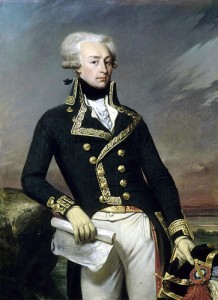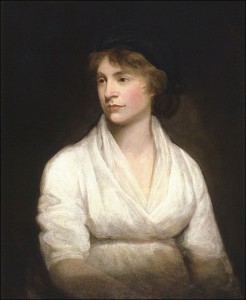All links are to Wikipedia entries.

Lieutenant General Lafayette painted by Joseph Désiré Court. (Click on image to see a larger version.)
Government, Politics, and War:
- Denmark is the first country in the world to outlaw slavery.
- March 1: Leopold II, Holy Roman Emperor, dies and is succeeded by his son, Francis II, who will be the last Holy Roman Emperor.
- March 11: Sierra Leone is established under British rule as a home for former slaves.
- March 29: King Gustav III of Sweden is assassinated.
- April 20: France declare war against Austria.
- April 24: The guillotine is adopted as the official means of execution in France, and remains so until the death penalty is abolished in 1981. The last execution by guillotine is in 1977.
- June 13: Prussia declares war against France.
- August 10: A Paris mob storms the Tuileries Palace and 600 of the king’s Swiss guardsmen are massacred. King Louis XVI is arrested and taken into custody. He and his family are held as prisoners in the Temple.
- August 19: Lafayette, leader of the French National Guard, is declared a traitor by the National Assembly and is imprisoned for 5 years.
- August 19: Coalition Armies (Austrian, Prussian, and French Royalist troops) attack France.
- September – George Macartney, 1st Earl Macartney, sails from Portsmouth in HMS Lion as the first official envoy from the Kingdom of Great Britain to China.
- September 2-7: 1200 political prisoners are murdered in Paris during a wave of mob violence known as the September Massacres. Three Roman Catholic bishops and over 200 priests are slaughtered.
- September 14: Thomas Paine flees England for France after being indicted for treason (for publishing the Rights of Man). In December he is tried in absentia and sentenced to death.
- September 21: The French National Convention abolishes the monarchy and officially declares France a republic.
- September 22: Day 1 of the new French Revolutionary Calendar.
- December 26: The trial of Louis XVI of France begins.
Society and Social History:
- Mass emigration of crofters in the Scottish Highlands following Clearances for grazing brings about the “Year of the Sheep“:
- January 25: The radical London Corresponding Society is established.
Literature, Journalism, and Publishing:
- Henry Walton Smith and his wife Anna establish the newsagent’s business in Little Grosvenor Street, London, which will become W H Smith.
- January: Mary Wollstonecraft publishes her Vindication of the Rights of Woman, for which she is called by reviewers a “hyena in petticoats.”
Art, Architecture, and Design:
- Ozias Humphry is appointed Portrait Painter in Crayons (i.e. pastels) to George III.
- February 23: portrait painter Sir Joshua Reynolds dies at age 68.
- February: American-born painter Benjamin West becomes the 2nd president of the Royal Academy, after the death of its first president, Sir Joshua Reynolds.
- March: Thomas Lawrence is appointed principal painter to George III.
- March: Architect Robert Adam dies at age 63.
Science and Industry:
- William Murdoch invents gas lighting.
- Claude Chappe successfully demonstrates the first semaphore line, between Paris and Lille, constituting an optical telegraph.
- George Anschutz constructs the first blast furnace in Pittsburgh, Pennsylvania.
Natural History and Exploration:
- May: George Vancouver explores Puget Sound and becomes the first European to see Mount Rainier.





